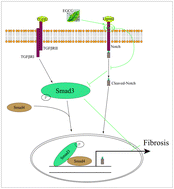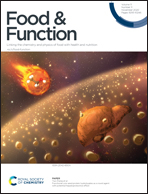EGCG targeting Notch to attenuate renal fibrosis via inhibition of TGFβ/Smad3 signaling pathway activation in streptozotocin-induced diabetic mice
Abstract
Renal fibrosis is a characteristic of diabetic nephropathy, which is a serious complication of diabetes. It has been reported that (−)-epigallocatechin gallate (EGCG) attenuates renal fibrosis. However, the molecular mechanism of regulation by EGCG in this process remains unclear. Previous studies showed that abnormal activation of Notch signaling contributes to the development of renal fibrosis. Previous studies have demonstrated that EGCG attenuates Notch1 expression. In this study, we found that the levels of fibronectin and Notch1 expression were decreased in human embryonic kidney cells after treatment with EGCG. We also observed that the type II transforming growth factor beta receptor (TGFβRII) and Smad3 pathway were inhibited in kidney cells by treatment with EGCG. In the diabetic kidney, we found that the activation of Notch signaling was attenuated by administration of EGCG. Moreover, TGFβRII and Smad3 phosphorylation could be inhibited by treatment with EGCG in the kidney. These results indicated that EGCG may improve renal fibrosis by targeting Notch via inhibition of the TGFβ/Smad3 pathway in diabetic mice. Our findings provide insight into the therapeutic strategy for diabetes-induced renal fibrosis, and suggest EGCG to be a novel potential medicine for the treatment of chronic kidney disease in patients with diabetes.



 Please wait while we load your content...
Please wait while we load your content...